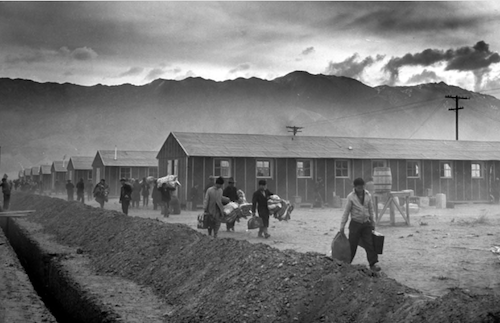From an article by Line Sidonie Talla Mafotsing published in the Atlas Obscura web site:

In 2019, Tsuru For Solidarity, a social justice organization led by Japanese Americans, wanted to organize a rally in Washington DC to protest the separation of migrant children from their families at the US-Mexico border. Because many in Tsuru for Solidarity had family members who were incarcerated at detention sites in the United States during World War II, they planned to chant the names of the people currently being held along with the names of those who were incarcerated during the war—but there was no list of the Japanese Americans imprisoned at the internment camps.
“I had somehow presumed that because the US government passed the Civil Liberties Act in 1988, that there was a list,” says Duncan Ryuken Williams, a professor at the University of Southern California and a Buddhist priest who works with Tsuru for Solidarity. The Civil Liberties Act of 1988 was a federal law issuing a formal apology for President Franklin D. Roosevelt’s February 1942 order establishing the detention camps and $20,000 checks to camp survivors. “They did end up issuing 81,000 checks, but nobody really knew how many people were incarcerated,” he says. Williams began accounting for every single person who had been incarcerated in approximately 75 camps that existed mostly along the West Coast with a few in the South.
With a core group of 12 researchers and 100 volunteers undertaking thousands of hours of work, the Ireichō was born: it is a massive book listing the names of the 125,284 Japanese Americans who were incarcerated during World War II. The book is currently on display at the Japanese American National Museum in Los Angeles’s Little Tokyo.
The Ireichō is more than 1,000 pages and weighs almost 30 pounds. “It’s a very hefty book and it’s quite a big procedure to open,” says Williams. The book is surrounded by ceramic tiles infused with soil retrieved from the incarceration sites, and people are encouraged to stamp a Japanese hanko seal—a carved stamp used in lieu of a hand-written signature—next to the names of their family members and next to those that have no descendants as a way of also keeping their memories alive.
There is much more in the article at: https://tinyurl.com/2v9bs6ur. Please note that the information is not (yet) available online.